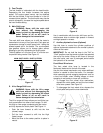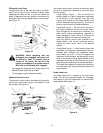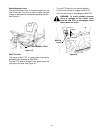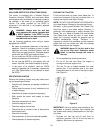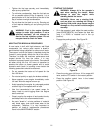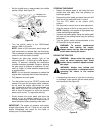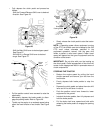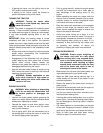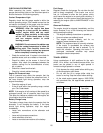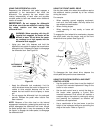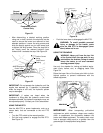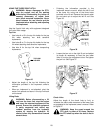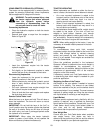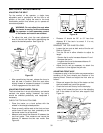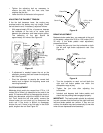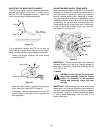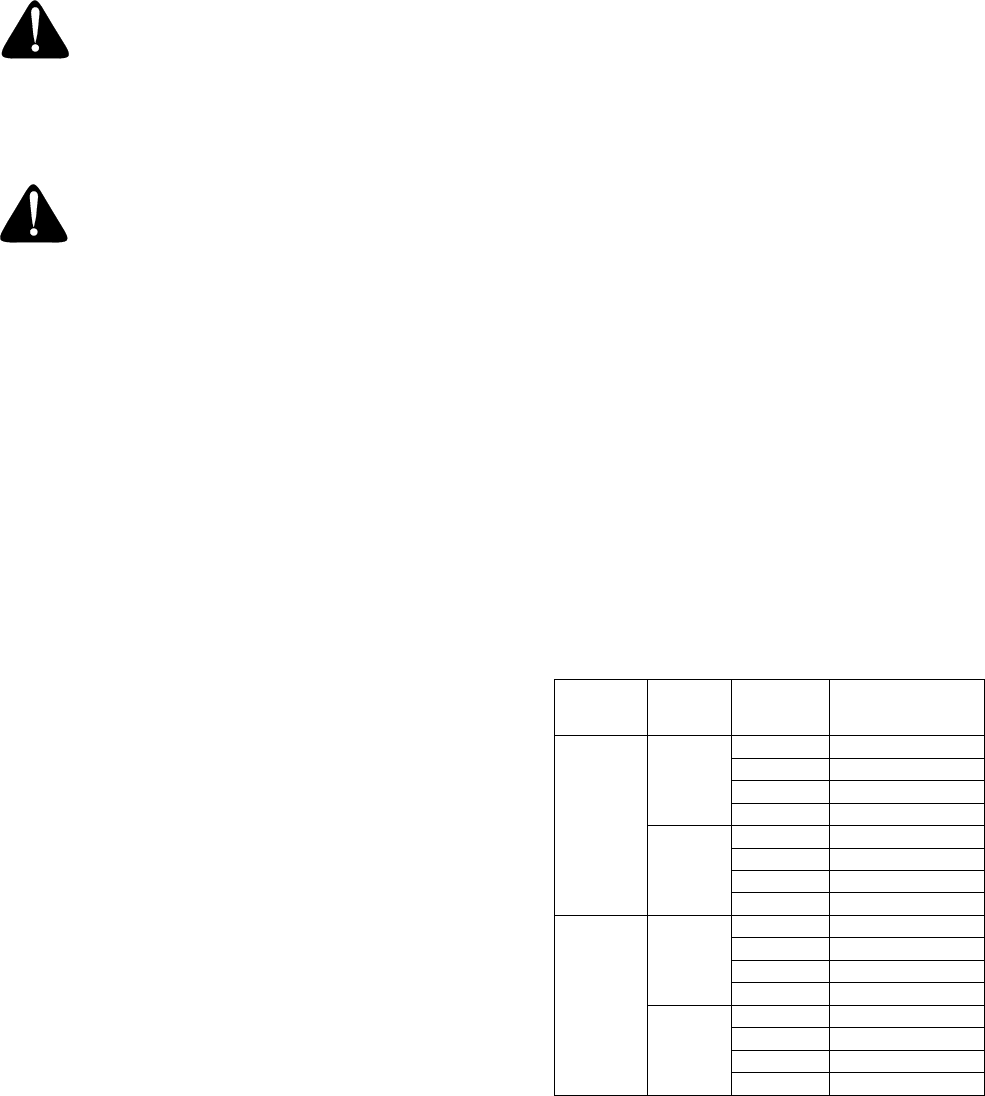
25
CHECK WHILE OPERATING
While operating the tractor, regularly check the
gauges and warning lights on the instrument panel to
ensure the tractor is functioning properly.
Coolant Temperature Light
Regularly check that the gauge needle is within the
normal operating range. If the needle moves into the
red section (overheat) of the gauge, stop the tractor
immediately and check for the following causes:
WARNING: After the engine has been
running for a short period, the radiator,
muffler, engine block, and any metal
surface in close proximity to the engine
will be HOT. Allow these areas to cool
and use extreme caution to avoid
burning yourself.
WARNING: Do not remove the radiator cap
until the coolant temperature is below its
boiling point. Then carefully loosen the
cap to its first stop to relieve any pressure
before completely removing the cap .
• Check the coolant level. If coolant is low check for
possible cause, such as a radiator or hose leak.
• Check for debris on the screen in front of the
radiator. Also check the passages between the
radiator cooling fins for accumulations of dust,
dirt, or debris.
• Check for a loose fan drive belt.
• Check for internal radiator blockage.
Engine Oil Pressure Lamp
The oil pressure lamp alerts the operator that the
engine oil pressure is below the prescribed level. If
the lamp should light during operation, stop the
engine immediately.
• Check the engine oil level.
• If the oil level within the operating range, contact
your Cub Cadet dealer.
NOTE: If the engine is left running at idle speed for a
prolonged period, the oil pressure lamp may light.
This does not indicate a problem with the engine, but
this situation should be avoided.
Battery Charge Lamp
The battery charge lamp alerts the operator that the
alternator in not charging the battery. If the lamp
should light during operation, stop the engine
immediately.
• Loose wire connections at the alternator and
regulator.
• Loose wiring harness connections.
• Loose alternator drive belt.
• Loose or corroded connections at the battery.
Fuel Gauge
Regularly check the fuel gauge. Do not allow the fuel
tank to empty completely. If the tractor runs out of
fuel, air is allowed to enter the fuel system, which
could cause the engine to run poorly after refueling. If
this happens, the fuel system should be bled prior to
restarting the engine (refer to MAINTENANCE in this
manual).
Observed Problems
The engine should be stopped immediately and the
tractor checked if any of the following are observed
while operating the tractor.
• The engine suddenly slows down or speeds up.
• Unusual noises are suddenly heard.
• The engine exhaust suddenly and for no
apparent reason becomes very dark .
NOTE: The engine exhaust is normally colorless.
If the tractor is overloaded the exhaust may
become darker until the load is reduced. Try to
avoid this situation. Operating the tractor in a
prolonged overloaded condition may cause
damage to tractor components.
TRAVEL SPEEDS
Using combinations of shift positions for the main
shifter, Hi-Lo shifter, and forward/reverse shifter, the
tractor can be placed in any of eight speeds in
forward and eight speeds in reverse.
• Fully depress the clutch pedal before shifting any
of the transmission shift levers.
• Do not shift the Hi-Lo range shifter while the
tractor is moving. Stop the tractor before shifting.
• At the rated engine speed (approx. 2600 RPM)
with standard tires, the approximate speeds are
as follows:
Fwd./Rev.
Position
Hi-Lo
Position
Main Gear
Position
Approx. Speed
mph (kph)
Forward
Low
1 1.05 (1.7)
2 1.52 (2.3)
3 2.25 (3.6)
4 3.29 (5.3)
High
1 4.6 (7.4)
2 6.39 (10.3)
3 9.86 (15.9)
4 14.43 (23.2)
Reverse
Low
1 1.02 (1.6)
2 1.4 (2.2)
3 2.2 (3.3)
4 3.1 (4.9)
High
1 4.2 (6.8)
2 5.89 (9.5)
3 9.05 (14.6)
4 13.26 (21.4)



